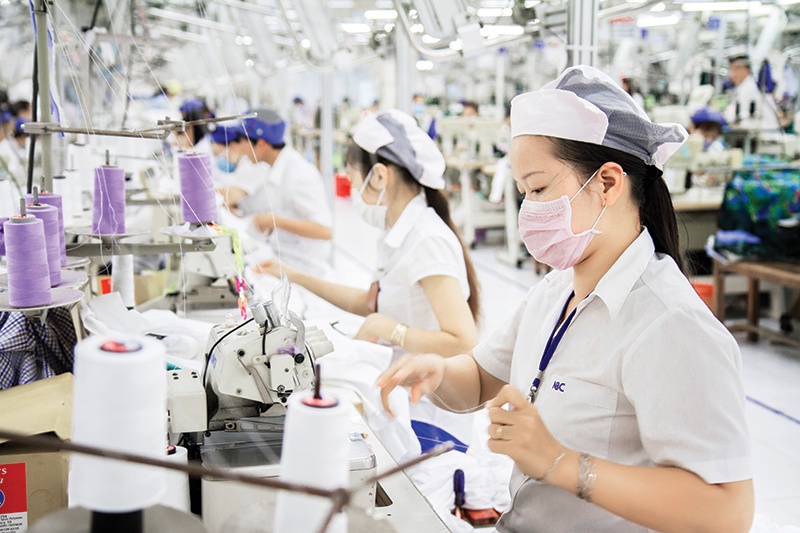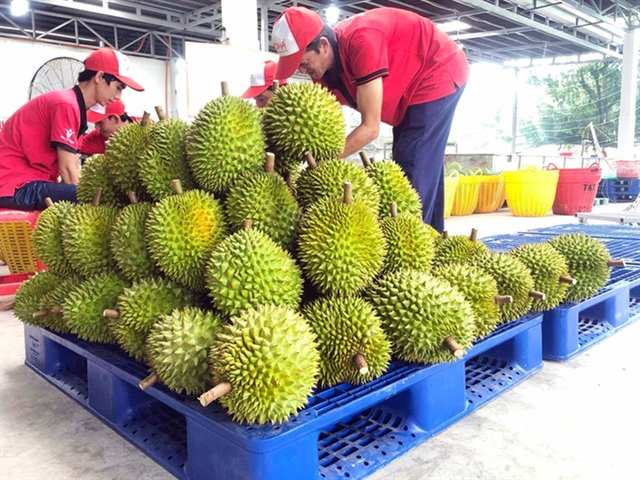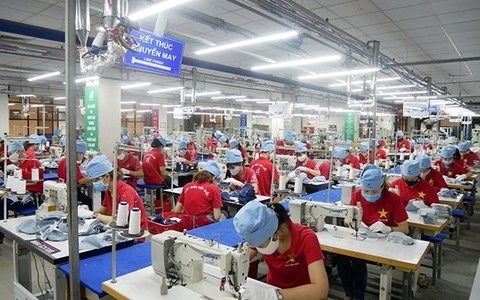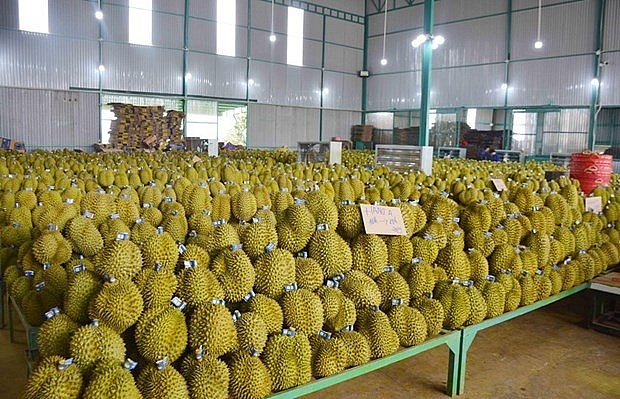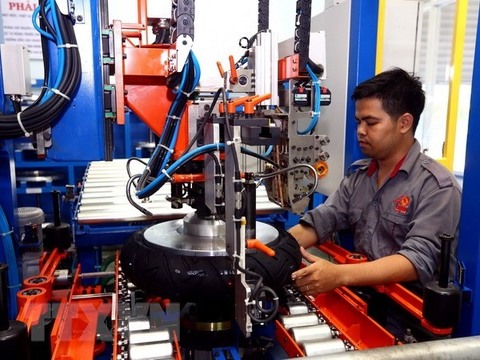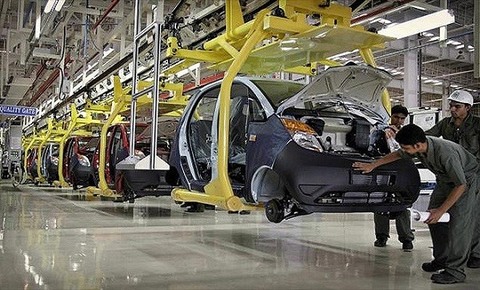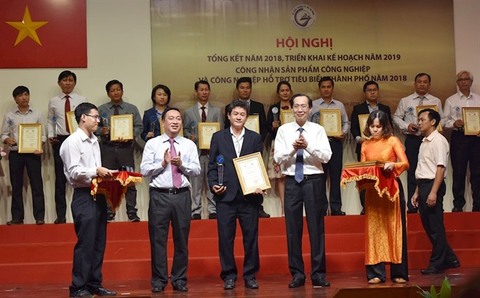Viet Nam should boost trade promotion for more exports to ASEAN
Viet Nam should boost trade promotion for more exports to ASEAN
Viet Nam should promote trade more overseas to bring in new customers and boost exports to the ASEAN region.
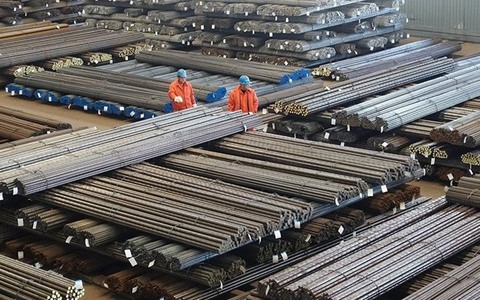
That was the message from Le Hoang Tai, deputy head of the Trade Promotion Department under the Ministry of Industry and Trade (MoIT).
He said the ministry would make it easier for local enterprises to enhance export of their products to the ASEAN market.
It would deploy measures to have more trade promotion programmes, improve product quality and remove difficulties for businesses.
Especially for Thai market, the ministry needs coordination from the Ministry of Agriculture and Rural Development (MARD) to negotiate with the Thai authorities to import of more fruits and vegetables because right now, only five types are allowed.
Each year, the ministry had cooperated with many domestic and foreign agencies to carry out trade promotion activities to the ASEAN market, he said.
There have been three groups of trade promotion activities carried out including organisation of delegations of Viet Nam’s enterprises joining international trade fairs and visiting regional markets for seeking business opportunities as well as arranged delegations of ASEAN’s businesses to Viet Nam to find partners.
The ministry is also planning to host trade fairs in Myanmar to show the country what goods are available in Viet Nam.
Nguyen Duong Kien, deputy head of the South East Asia, South Asia and Regional Cooperation Division under the ministry’s Asia and Africa Market Department, said Myanmar had just opened its market in recent years and was in need of high quality goods.
In the past, enterprises had concentrated on exporting to Bangkok, and ignored other areas of Thailand, Kien said.
Now, they should pay attention to those provinces and cities or they should take advantage of the East-West economic corridor to export Vietnamese goods to the region, including seafood, vegetables and fruits that have potential in this market.
Pham Tat Thang, head of MoIT’s Trade Research Institute, said local enterprises should focus further on improving quality and design of product as well as branding to meet the demand of ASEAN markets.
ASEAN is recognised as a major export market of Viet Nam. However, there are many key products that are not exported or are shipped in small quantities to other ASEAN countries such as seafood, wood products, food and steel, according to MoIT.
To increase this, Kien said local enterprises should study demand and standards of goods to have strategies in place on production and trading of suitable and good-quality products. In addition, the enterprises should pay attention to meet Halal standards because the market includes some Islamic countries.
Tran Thi Ha, from the Ministry of Finance’s Institute of Financial Strategy and Policy, agreed that Vietnamese companies should know more about regulations and technical standards or necessary conditions for export goods to Islamic countries because there are a lot of Muslims in Indonesia and Malaysia. This was a potential market that local businesses had ignored in the past.
The State needed to develop trade and investment promotion centres, Ha said, that would create necessary links at the national and regional levels with enterprises.
The State relevant agencies also needed to update new regulations and policies on importing goods of the regional countries, she said, so the local enterprises could have suitable changes in production and business plans to promote further their exports to regional markets.
This should include business strategies following demand of customers in each ASEAN country and team-up with distributors to boost consumption of Vietnamese goods.
Exports to ASEAN
According to Kien there is no distribution network of Vietnamese people in ASEAN countries but local enterprises can cooperate with distribution systems and retail stores of overseas Vietnamese people in each ASEAN markets to bring Vietnamese goods to local consumers in ASEAN.
One of the reasons why Vietnamese goods are difficult to enter the Thai market as well as ASEAN countries is that Viet Nam does not have access to large retailers there.
According to the MoIT, ASEAN is a key export market of Viet Nam, having fast growth in export value. Between 2010 until 2017, Viet Nam’s export value more than doubled from US$10.3 billion to $21.7 billion. Thailand, Indonesia, Malaysia and Singapore are the countries importing most goods.
Kien said ASEAN countries are close and have similarities in culture and consumption habits so Vietnamese enterprises could save money for market and product research as well as transport costs.
When the ASEAN Trade Agreement officially came into effect in 2010, most of the tariff lines were reduced to zero to create better conditions for Viet Nam to increase exports.
However, Kien said less than a third of businesses had taken advantage of the reductions. Viet Nam’s export goods to ASEAN had accounted for 2.2 per cent in Thailand, 2.7 per cent in Malaysia and 2 per cent in Indonesia.
He said local enterprises had not boosted their products to Thailand because they thought products won’t compete with Thai products in price and quality.
Meanwhile, some Thai groups had bought Vietnamese manufacturing enterprises to take advantage of free trade agreements (FTAs) and to dominate the Vietnamese market.
"Viet Nam market is also a transit point for Thai goods, with more than 90 per cent of Thai fruits exported to China via Viet Nam," Kien said.
Many Vietnamese key export products had entered Malaysia and Indonesia but the market share of those products was still small such as rice, seafood, coffee, iron and steel, processed foods and household goods. Even in neighbouring Laos, Vietnamese goods had accounted for only 7 per cent of the market.


